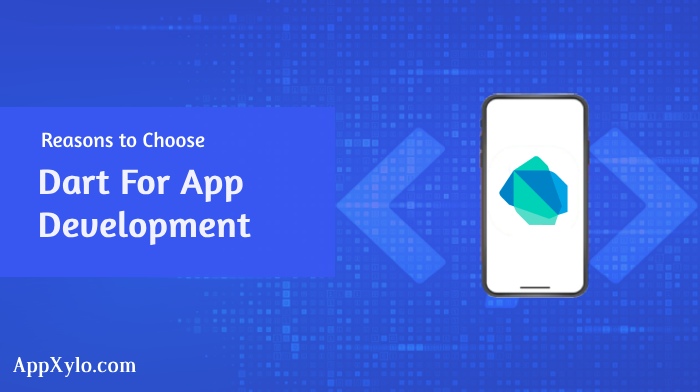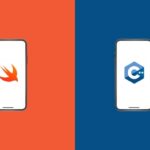In the ever-evolving landscape of app development, developers are constantly seeking tools and languages that offer efficiency, flexibility, and performance. One such language that has been gaining traction in recent years is Dart. Developed by Google, Dart is an open-source, object-oriented programming language with a strong focus on building user interfaces. It offers a range of features and benefits that make it an excellent choice for app development across various platforms. In this blog post, we’ll delve into the reasons why you should consider using Dart for your next app development project.
Why you should use Dart for App Development
Fast Development Process:
Dart comes with a powerful set of tools and libraries that streamline the development process. One of its standout features is Hot Reload, which allows developers to make changes to their code and see the results instantly without having to restart the entire application. This significantly speeds up the development cycle, enabling developers to iterate quickly and efficiently.
Cross-Platform Compatibility:
Dart is a versatile language that can be used to build apps for multiple platforms, including iOS, Android, web, and desktop. With frameworks like Flutter, developers can write code once and deploy it across different platforms without significant modifications. This not only saves time and effort but also ensures consistency and coherence across various versions of the app.
Flutter Framework:
Dart is most commonly associated with the Flutter framework, which has gained immense popularity for its ability to create beautiful and highly performant user interfaces. Flutter offers a rich set of pre-designed widgets that can be customized to suit the specific needs of the application. Additionally, Flutter’s reactive programming model and extensive widget catalog enable developers to create stunning UIs with smooth animations and transitions.
Strong Typing and Static Analysis:
Dart is a statically typed language, which means that variables and expressions have explicit types that are checked at compile-time. This helps catch errors early in the development process, reducing the likelihood of bugs and runtime crashes. Dart’s strong typing also improves code readability and maintainability, making it easier for developers to collaborate on large-scale projects.
Performance:
Dart is designed with performance in mind, offering features such as ahead-of-time (AOT) compilation and just-in-time (JIT) compilation. AOT compilation translates Dart code into native machine code, resulting in faster startup times and improved runtime performance. JIT compilation, on the other hand, optimizes code at runtime, further enhancing performance during development and debugging.
Platform Integration:
Dart is designed to seamlessly integrate with a variety of other technologies and platforms, making it a versatile choice for app development. For instance, Dart can easily interact with native code written in languages like Java (for Android) and Swift/Objective-C (for iOS) through platform channels in Flutter. This allows developers to leverage existing codebases and libraries, as well as access device-specific features and APIs.
Web Compatibility:
Dart’s compatibility with web technologies opens up opportunities for building hybrid applications that combine native and web elements. Dart can be used to write client-side logic for web applications, and it can also be compiled to JavaScript for execution in web browsers. This flexibility enables developers to target multiple platforms with a single codebase, reducing development time and effort.
Full-stack Development:
Dart’s compatibility with popular backend frameworks like Node.js and Express.js allows developers to build full-stack applications using a unified language and ecosystem. By using Dart both on the frontend and backend, developers can achieve better code consistency, improve team collaboration, and streamline the development process.
Growing Community and Ecosystem:
Dart has a thriving community of developers who actively contribute to its growth and evolution. This vibrant ecosystem includes a wide range of third-party packages and plugins that extend the functionality of Dart and Flutter. From state management libraries to Firebase integrations, developers have access to a wealth of resources that can help them build powerful and feature-rich apps.
Backed by Google:
As the creators of Dart, Google provides strong support for the language and its associated frameworks. This backing instills confidence in developers, knowing that Dart is backed by a tech giant with a vested interest in its success. Google’s ongoing investment in Dart also ensures that it remains up-to-date with the latest advancements in app development and technology.
In conclusion, Dart offers a compelling set of features and benefits that make it an excellent choice for app development. Whether you’re building a simple mobile app or a complex web application, Dart’s fast development process, cross-platform compatibility, strong typing, performance, and robust ecosystem make it a language worth considering. With the backing of Google and a thriving community of developers, Dart is poised to continue making waves in the world of app development for years to come.
Frequently Asked Questions:
Is Dart and Flutter enough for app development?
Yes, Dart and Flutter provide a comprehensive framework and language combination for cross-platform application development. With Flutter’s extensive widget library and Dart’s robust features, developers can effectively create high-quality apps for various platforms, including iOS, Android, web, and desktop.
Is Dart good for Android development?
Dart is a viable option for Android development, especially when utilizing the Flutter framework. Flutter enables developers to build natively compiled applications for Android using Dart, offering advantages such as fast development cycles, expressive UI design, and efficient performance. While Dart may not be as commonly associated with Android development as Java or Kotlin, its usage within the Flutter ecosystem demonstrates its effectiveness for creating dynamic and visually appealing Android applications. You can also read our comparison on Dart and Java for app development here.
Can I build an app with Dart?
Yes, Dart is a versatile programming language suitable for building various types of applications, including mobile, web, and desktop. When paired with the Flutter framework, Dart becomes particularly powerful for developing cross-platform mobile apps with native-like performance and aesthetics.


